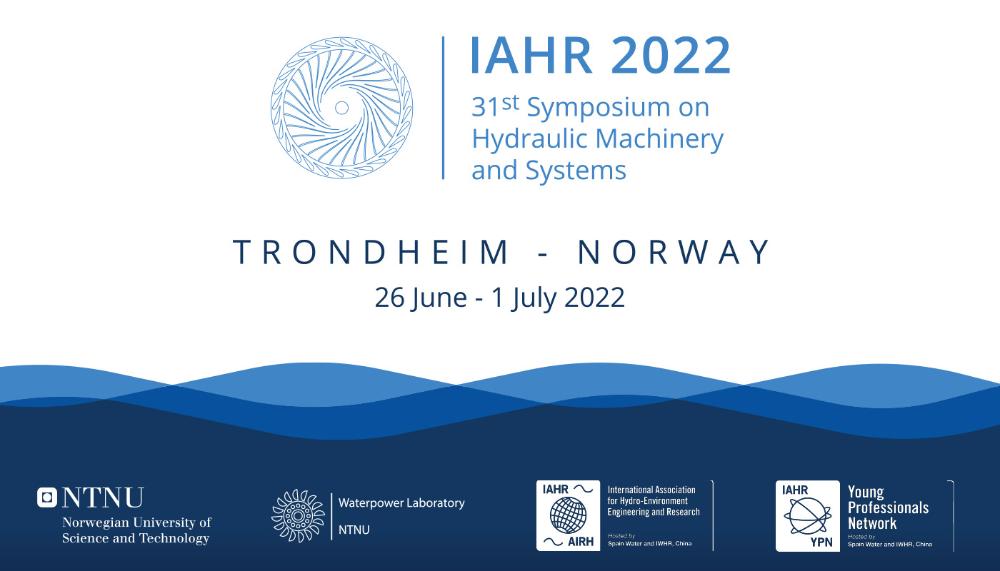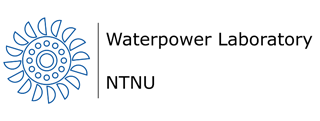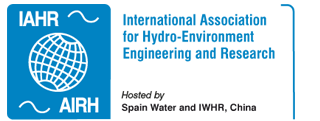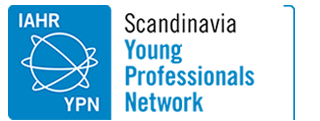Home - IAHR 2022
31st Symposium on hydraulic machinery and systems
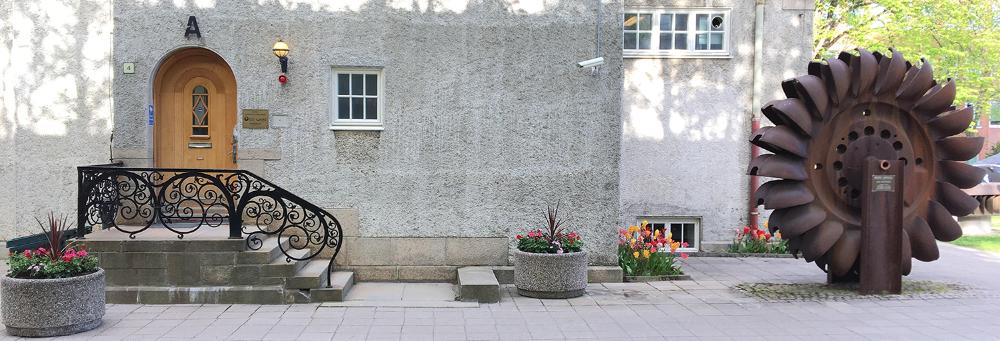
Waterpower Laboratory, NTNU
Hydropower plays an essential role in the modern energy market. It is also going to play critical role in the futuristic market, including the smart grid. Hydropower is one of leading sources of energy used to meet the primary, secondary and territory ancillary services to balance the energy demand. Hydraulic turbine is essential component of a hydro power plant to generate electricity. The turbine includes several components, including rotating and stationary, and the flow field is extremely complex. Over the century turbine and the components designs are constantly improved by dedicated research and development teams across academia and industries through strong collaboration. Hence, the turbines can deliver the best possible performance and services.
Researchers and scientist often come across different challenges, which are related to turbine operation, maintenance and the corresponding flow field. The challenges are unique to the power plant, which require customized approach. The challenges are addressed using different techniques, including laboratory research, field experiments, computational code (one-dimensional) and three-dimensional computational fluid dynamic, multi-physics approach, fluid structure interaction and most recently artificial intelligence and digital twin.
The 31st symposium on hydraulic machinery and systems, widely known as IAHR symposium, provides unique opportunity to the academic and industrial research teams to exchange the stat-of-the-art knowledge and ideas that will help to develop the next-generation of hydropower technology.
Post symposium summary
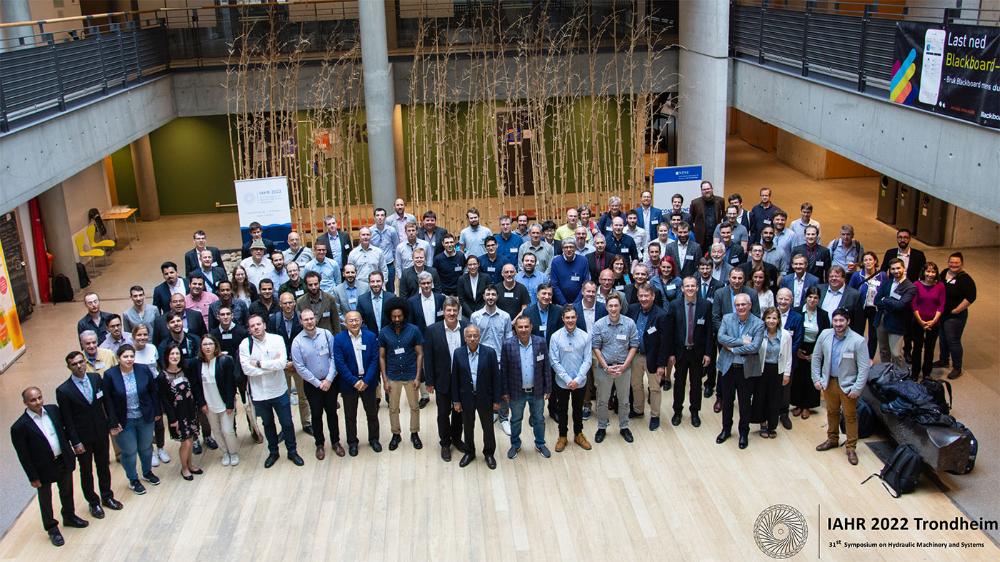
Paricipants of IAHR 2022 symposium at NTNU in Trondheim.
Background
The Symposium on Hydraulic Machinery and Systems, widely known as IAHR symposium within hydraulic machinery community, is organized every second year. It is organized under the framework of the International Association for Hydro-Environment Engineering and Research (IAHR), which is founded in 1935. IAHR comprises of several technical divisions, provides operational framework for the Committees. The present symposium is organized under IAHR Hydraulics – Committee on Hydraulic Machinery and Systems. The earliest Symposium on Hydraulic Machinery and Systems was organized around 1960; since then, the tradition is continued. The symposium combines both academic and industrial researchers on common platform and provides unique opportunity to share state-of-the-art knowledge and ideas.
Hydropower and hydraulic machinery play essential role to reduce carbon footprint and provide green energy for the industrial and domestic use. Hydropower also helps to enhance the robustness of the power grid through energy storage and flexibility, which allows high penetration of wind and solar power. The main emphases are to stimulate the innovation-based research, to understand the technologies associated with hydraulic machinery, and to promote the interaction between the turbomachinery designers, users, the academic community, and the society at large. Scope of the symposium is hydro-mechanical equipment, including turbines, pump-turbines, pumps used as turbines, smart grid, digital twin, turbine intake system, and other hydro mechanical equipment.
Organization and outcome
The symposium was organized during 26 June – 1 July 2022 at Norwegian University of Science and Technology (NTNU), Trondheim, Norway. The last time, NTNU/NTH organized this symposium during 20 – 23 June 1988. It is an honor to organize the prestigious symposium again. The symposium included parallel sessions for the presentation of the research work, a concert, laboratory tour, scientific tour and cultural tour. The preparation of the symposium was started from the initial announcement in IAHR 2018 Kyoto, and after the formal approval from the Executive Committee. Formal invitation for IAHR 2022 Trondheim was sent out during IAHR 2020 Lausanne by the Chair of the organizing committee, Ole Gunnar Dahlhaug. The organization of the symposium was led by Chirag Trivedi.
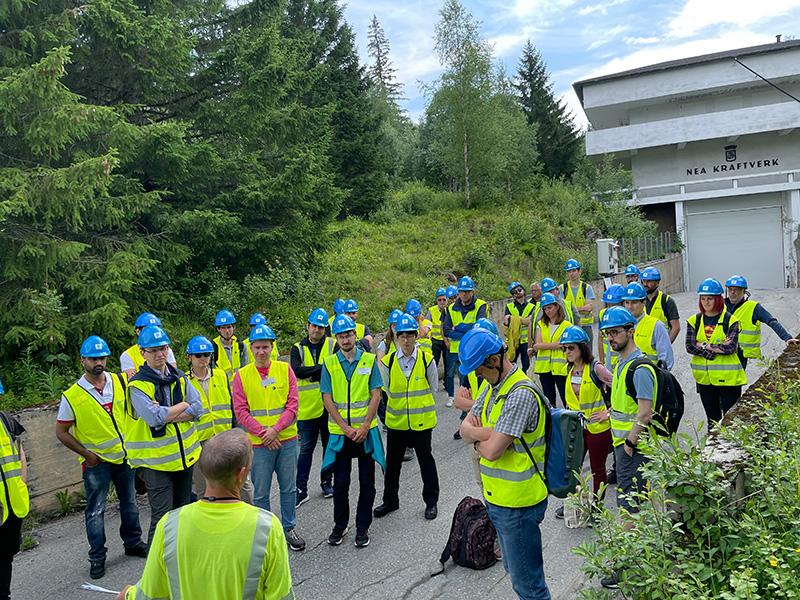
Scientific tour to Nea Hydropower plant
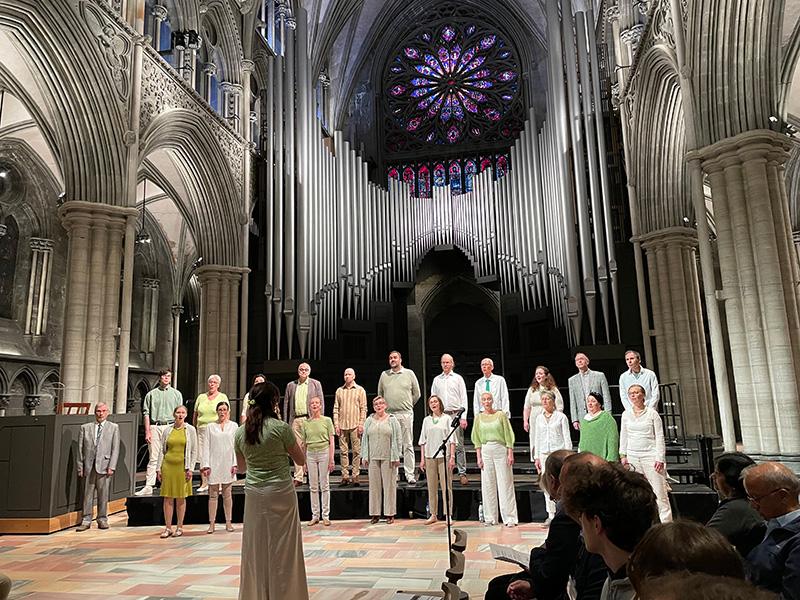
Concert in Nidaros Cathedral
The symposium comprised of three committees: (1) organizing committee, (2) executive committee (3) scientific committee. A total of 10, 18 and 37 members in the organizing, executive and scientific committees, respectively. The symposium was divided into 12 distinct topics of hydraulic machinery and systems: (1) Intake system, (2) Hydraulic turbines, (3) Pump-turbines, (4) Multiphase flow, (5) Vortex breakdown, (6) Measurement techniques and signal processing, (7) Computational fluid dynamics and fluid structure interactions (8) Vibration and fatigue loading (9) Sustainable hydropower (10) Energy storage and flexibility, (11) smart grid, digital twin and artificial intelligence, (12) Selected topics. A total of 170 abstracts received for the symposium, and 122 manuscripts accepted for the symposium presentations. The manuscripts accepted after two rounds of review, and the final submission deadline for the manuscripts was 15 May 2022. Experts (around 56) in the field of hydraulic machinery have contributed to carry out the review process. Total successful presentations of scientific work were 117, including physical and virtual participations. The organizing committee had made an additional arrangement for the virtual participant, who could not attend physically in Trondheim.
The symposium registration (welcome reception) was opened on 26 June (18:00 hrs) at Kafe To Tårn with beverages in Trondheim. There were around 45 delegates registered. The symposium was formally inaugurated by Stefan Riedelbauch on 27 June in Trondheim, NTNU Gløshaugen campus. The programme was streamed for the virtual participants. Stefan Riedelbauch has presented research related to hydraulic machinery and associated challenges in experimentations and scaling for the prototype machines. Later, Ole Gunnar Dahlhaug welcome the participants as a Chair of the organizing committee and presented historical development of the Waterpower Laboratory. Later, Asgeir Tomasgaard presented the research work related to energy transition in NTNU, and the main activities of FME center, NTRANS. Another presentation on FME center, hydropower, was presented by Liv Randi Hultgreen. Research and development activities under the hydropower center were presented, including the international collaborations with Europe, Asia, Africa and North America.
The first keynote speech of the symposium was focused on the historical development of high head hydraulic turbines and associated challenges with some open questions. The keynote speech was presented by Bjarne Børresen from Multiconsult. The challenges related to the turbine fatigue, need for the flexibility, and the open questions of rotor stator interactions, crack and fatigue loading were presented. Later part of the day, parallel sessions were organized for the authors to present their research work. The parallel sessions were organized in three auditoriums, and one of them was hybrid auditorium for the virtual participants. A special arrangement was made to the participants, who could not attend the symposium, because of flight cancellation or unable to travel at last minute. Those participants joined virtually via dedicated link and presented their work in real-time.
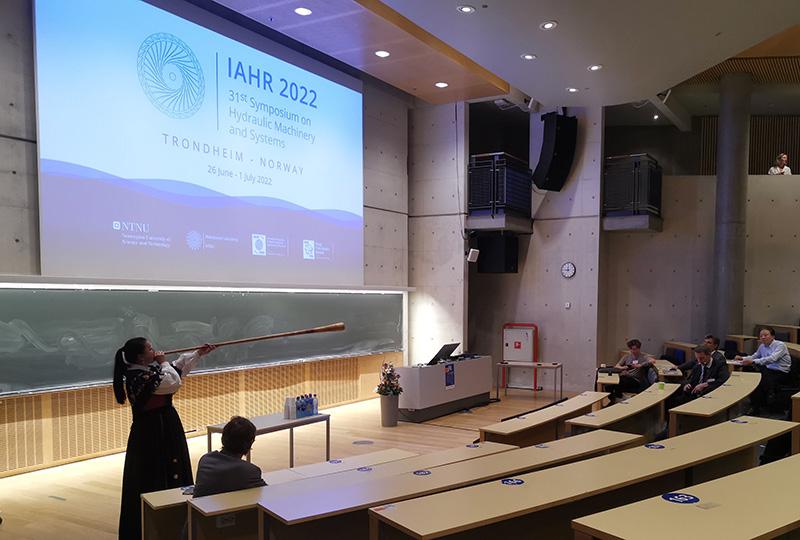
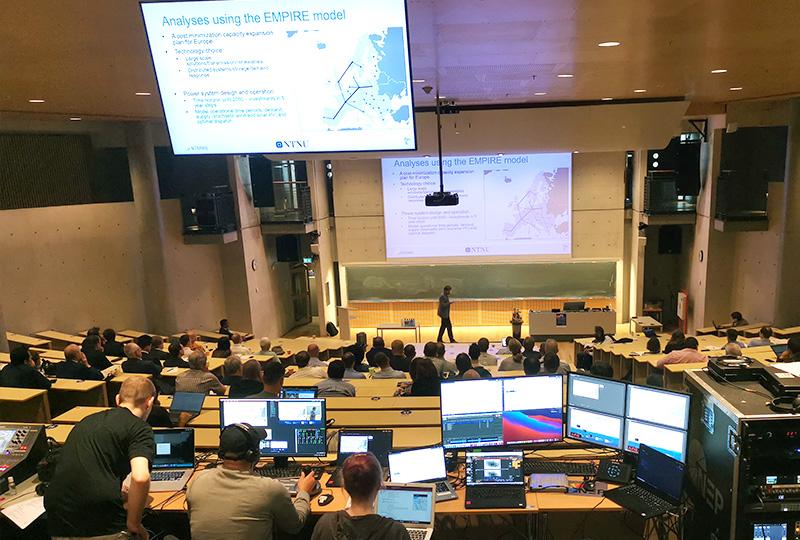
The second day was started with the keynote speech on industrial research and development of high head turbines by Thorbjørn Hellum-Reppen from Rainpower. The keynote focused on some of the challenges related to manufacturing of the turbines over the period of 50 years and how advancements in manufacturing are made. The keynote speech highlighted that manufacturing and refurbishment of high head turbine runner is complex due to very small blade passages, and not necessarily meet the ideal design idea of drawing board. Another keynote speech was delivered by Andrea Pirocca from 45 Engineering. This keynote was part of Young Professional Network of IAHR and aimed to encourage young researchers with innovative idea, and business opportunity. Later part of the day, parallel sessions were organized for the authors. During evening hours, a tour of the Waterpower Laboratory was scheduled followed by Choir concert at the Nidaros Cathedral and Gala dinner at Britania Hotel. Choir concert at the Nidaros Cathedral was very good based on the feedback from the participants.
Third day of the symposium was started with keynote speech on digitization of hydropower by Joakim Gundersen from Hafslund Eco Vannkraft AS. The keynote speech focused on state-of-the-art of digitization and condition monitoring in the context of the hydropower plant. A considerable progress has been made in condition monitoring however the conclusion was that there is long way to go and transform the analogue system into the real-time condition monitoring. The speaker also emphasized that real-time monitoring helped to prevent the breakdown and the long downtime of the powerplant, which helped to minimize the production cost. Later part of the day, parallel sessions were organized for the authors. During evening hours, a tour of the Waterpower Laboratory was scheduled for another group. Participants had opportunity to see the research results from the different on-going research projects, they discussed with the PhD students and postdoctoral researchers in the laboratory. They also discussed the different challenges in the experimental numerical work, and possible cooperation to mitigate the challenges.
Fourth day of the symposium was started with keynote speech on challenges and research progress of the medium and low head turbines. The keynote speech was delivered by Carl-Maikel Högström & Jens Österud combined from Vattanfall AB. The keynote speech was focused on state-of-the-art experimentations in the Vattanfall Research and Development laboratory under various projects, and challenges related to the need for the flexible energy, added mass, etc. The main challenge was the scaling of the research results in the laboratory environment to the prototype environment, specifically the dynamic part of the results. The laboratories have certain limitations due to short intake and influence of feed pump to mimic the prototype environment. Later part of the day, parallel sessions were organized for the authors. Closing ceremony was organized after the parallel sessions. The closing ceremony was led by Stefan Riedelbauch as Chair of the executive committee. Stefan Riedelbauch has presented the summary of executive committee meeting, which was held on 27 June, and upcoming event of IAHR during 2023 and 2024. Chirag Trivedi presented the overall statistics of the symposium for the participants followed by the presentation from Arun Kumar to host 32nd Symposium on Hydraulic Machinery and Systems. The symposium was formally concluded by Stefan Riedelbauch and Ole Gunnar Dahlhaug around 1530 hrs.
Fifth day aimed for scientific and cultural tours depending on the interest of the participants. The scientific tour was planned to visit Nea Hydropower plant in Tydal, which is around two hours from Trondheim. The cultural tour was planned to visit Røros (UNESCO world heritage site), which is around two hours and thirty minutes travel time from Trondheim. Large part of the participants preferred to join the scientific tour. Overall, both tours were informative and enjoyable for the participants.
Finally, the organizing committee of the 31st Symposium on Hydraulic Machinery and Systems is sincerely thankful to all participants for their contribution and participation to the symposium. The organizing committee hope the scientific work presented by the authors is useful to advance the research work. The organizing committee understand, travelling requires huge effort, time, finance, and meticulous planning, including backup plan. Without your presence, the symposium could have not been this much successful. It is our collective effort and contribution, and the organizing committee congratulates all. Once again, the organizing committee would like to extend my sincere thanks for the physical participation and travelling to Norway.
Contact
e-mail:
iahr2022@ntnu.no
Organizing committee
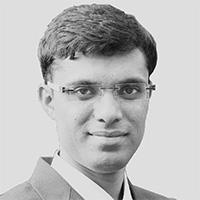
Head of organizing committee and Editor-in-chief
e-mail:
chirag.trivedi@ntnu.no
